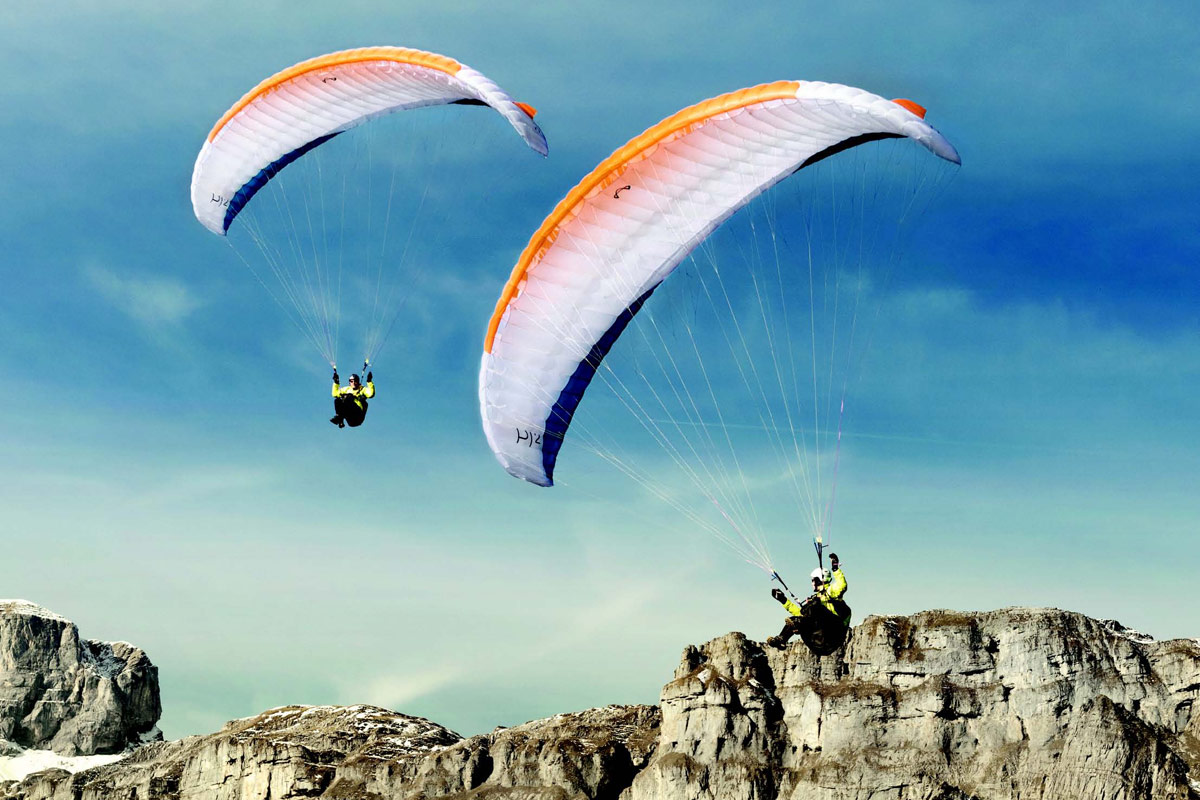
DAVE SOUTHERN reports (Skywings Magazine, January 2017. Republished with permission.)
It doesn’t seem three years ago that I tested Advance’s first foray into the mountain glider/mini-wing class, the Pi (Skywings, December 2012). At that time, the Pi was one of the lightest gliders around, designed for a niche part of the hike-and-fly market. Nowadays most manufacturers offer a glider for this market although the design characteristics vary considerably, from mini wings through single-and double-skin hike-up/fly-down wings to ultralight standard designs. You pay your money and take your choice depending on the type of flying you do. It is fair to say that most of these gliders, except those in the latter category above, are predominately descent gliders for the autumn and winter seasons in alpine areas.
The original Pi came in two sizes, the larger one weighing in at just under 3kg. I was so impressed by the Pi that, sometime later, I invested in one. I live in the hinterland between the Yorkshire Dales and Cumbria which offers plenty of hike-and-fly opportunities when the weather co-operates, and I am fortunate to be able to spend quite a lot of time out in the Alps. The Pi seemed an ideal addition to my standard wing because it would allow me to ski with the wing and harness on my back and fly down. I was able to tackle a number of un-pisted ski routes and have a great fly-down from height. The Pi was so agile it could almost be barrel-rolled, though this did not seem a good idea with skis on!
However the Pi did have its quirks. With only two risers there was no speed system on the standard model. If you wanted one (who wouldn’t want the extra security of additional speed in the mountains?) the only option was trimmers that took the glider out of certification. Not a problem if you are familiar with trimmers, but I suspect that this put some would-be purchasers off.
Advance PI 2: Design and construction
Fast forward three years and Advance have introduced the Pi 2. This however is a totally different concept and will appeal to a wider audience than its predecessor. Designed as an ultralight serial glider, there are now four sizes. The smallest, for light pilots or heavier ones looking for a fast descent, is the EN C 16m with a wide weight range of 50 -90kg and weighing a fraction over 2kg. The largest, the 27m, is rated EN A at its recommended take-off weight of 75 -105kg all up, and EN B at the ‘extended’ weight range of 105 -120kg. The 27 weighs 3kg, little more than the larger of the two original Pi models.
The modest flat aspect ratio of 4.5:1 gives the glider a stubby look, but don’t be fooled – the Pi 2 is very capable indeed. Advance have managed to produce a 4m2 larger glider at the same weight by reducing line length and incorporating sliced diagonals – trickle-down technology from the X-Alps programme. The internal construction incorporates rip-stop diagonals oriented to the direction of forces, improving the structural integrity, reducing weight and improving performance.
The three-riser wing is certified with a speed system in all sizes. Each size has an extended weight range and Advance provide a guide to the Pi 2’s behaviour in normal and ‘extended’ ranges. The terms ‘beginner’, ‘occasional’ and ‘expert’ need no interpretation.
The glider comes with either standard or lightweight risers (at no extra cost); my test models both had light ones. In the past I have found ultralight risers to be fiddly but I didn’t have this problem with the Pi 2 and I would select this option if I was buying one. The light risers use soft links instead of maillons to connect the lines, but the crucial difference is that they don’t have the standard risers’ split As for big ears.
The wing utilises 27g Porcher Skytex with 32g at the leading edge, and unsheathed Edelrid lines. It is supplied with the simple but ingenious Compressbag, which utilises a zipper to compress an already compact glider into a very small package indeed.
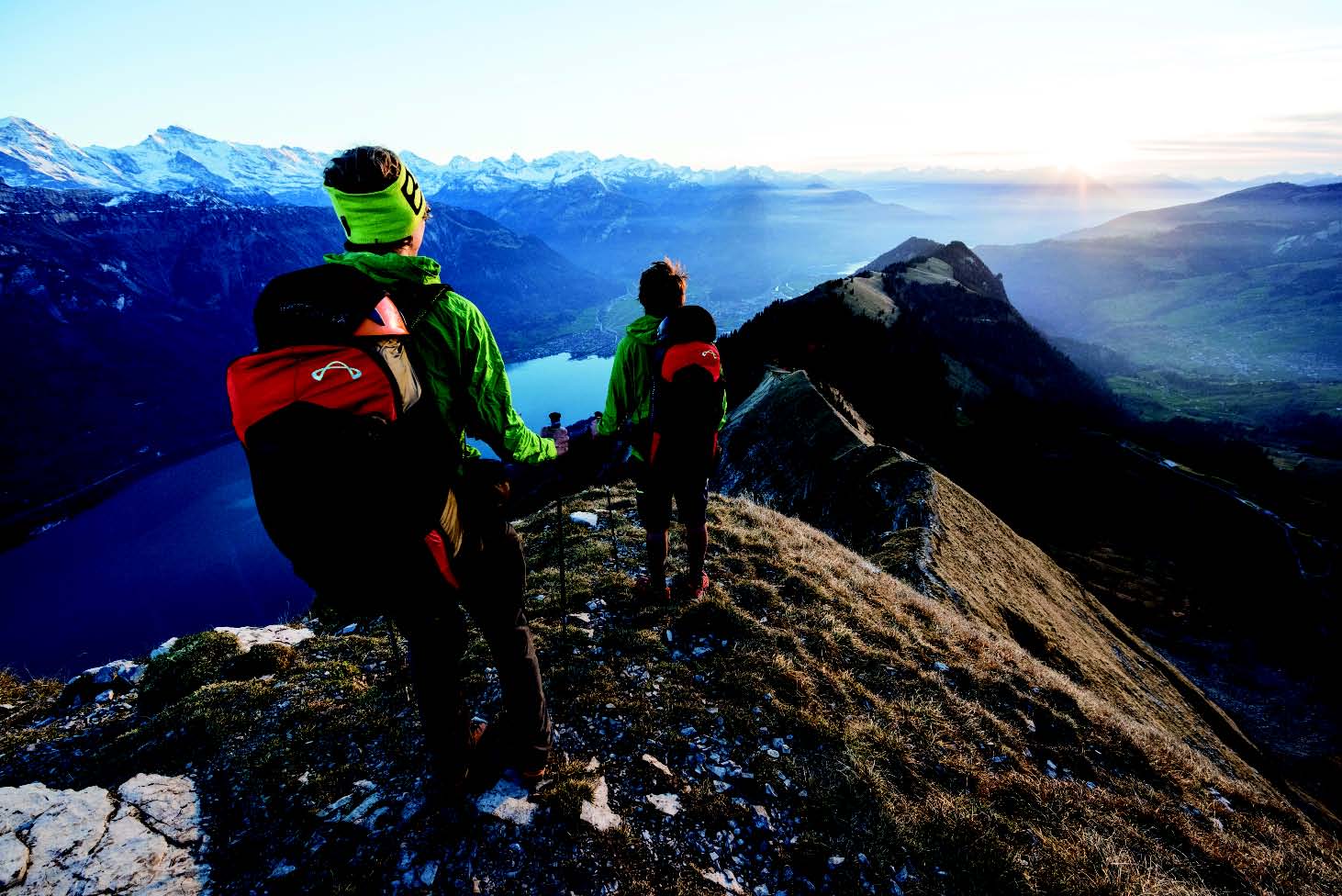
Advance Easiness 2
I flew the original Pi with Advance’s ultralight split-legged Easiness reversible harness, with an optional airbag. It was supremely comfortable and the ideal size for the light and compact Pi, but was too small to accept my standard wing. Advance have now introduced a totally new, and significantly larger, Easiness 2 which accommodates standard wings in both available rucksack sizes.
The Easiness 2 has a built-in underseat reserve compartment (a ventral reserve setup was needed with its predecessor). The harness retains the split-leg design, which I really like as a great compromise between a seat board and a hammock-style harness. This is a harness that could be flown for hours without any discomfort. It also lends itself perfectly to speed flying.
The Easiness 2 is a modular concept. As supplied you get the reversible harness, carabiners, comfortable rucksack, waist strap and useful front pocket on the chest strap. Advance refer to this as the ‘Comfort’ configuration; it weighs around 1.7kg in the smaller of the two available sizes. Adding Advance’s Easiness 2 airbag and integral reserve container gives you the ‘Security’ configuration at around 2.2kg in the smaller size. Whilst light, you could use the Easyness 2 as an everyday harness; it feels as robust as many on the market today. As a guide, I managed to pack my 29m standard wing in it without using the Compressbag.
For maximum lightness you can strip out the bits you don’t need; the bare harness and carabiners becomes the ‘Ultralight’ configuration at around 1.5kg. A lighter front reserve container, the Frontcontainer Zip, can also be fitted (and to any other suitable harness) and a Y-bridle to facilitate this comes with the harness.
The finish is superb, with a really well thought out pack. The days when paraglider packs were as ergonomic as a bin bag with shoulder straps have been banished to history; this sack is perfect for a long carry in the hills or for travel. I particularly liked the specially-designed gates of the AustriAlpin carabiners; other neat touches include a helmet net and pole/ice-axe holders. The waist band is removable though that is not something I’d elect to do.
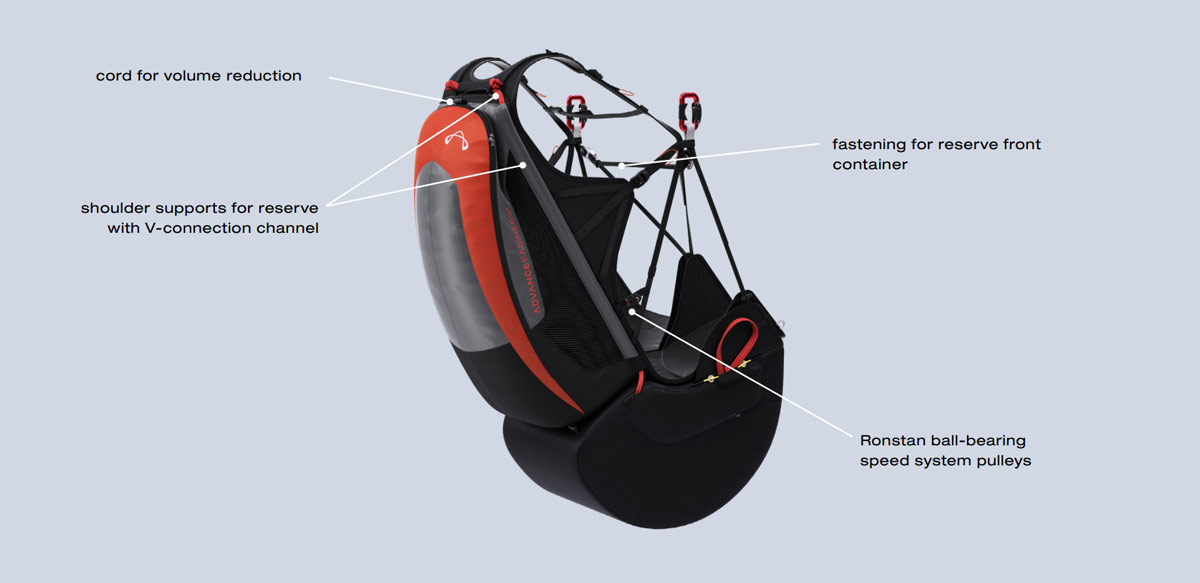
Let’s go flying!
In August of this year I was lucky enough to be able visit Advance at Thun for an introduction to these products and to go out and fly them. My wing for the day was the Pi 2 27 paired with the Easiness 2 harness. At 105kg all-up I was in the ‘hike-and-fly’ zone of Advance’s grading chart, and on the border between EN A and B.
It was one of those stable days we often get the Alps in August and a high launch point was needed. The ideal spot was Birg (2600m), above Murren and just below the famous revolving restaurant, Piz Gloria on the Schilthorn. We embarked on the telecabine, full of Far Eastern tourists drawn partly by the breathtaking views of the Three Maidens – the Eiger, Monch and Jungfrau – but more likely the association with James Bond! As soon as we set off the Bond theme played on a reel through the telecabine speakers!
Within minutes of leaving the second cable car we were back in formidable mountain scenery, walking through the remaining snow patches to a small take-off in a vast corrie, high above a small tarn. Below that was a big drop into a valley, with the landing field in the main valley some way to the west of where ours joined. My companions for the day were all flying standard wings, ranging from a Sigma 9 to an Omega X-Alps. The landing field was quite some way away and I confess to wondering about the glide of the Pi 2 if conditions proved to be as benign as they looked. I had no need to worry; small but workable thermals ran up the face below the lake and, more importantly, the glider had more than enough glide to reach the LZ.
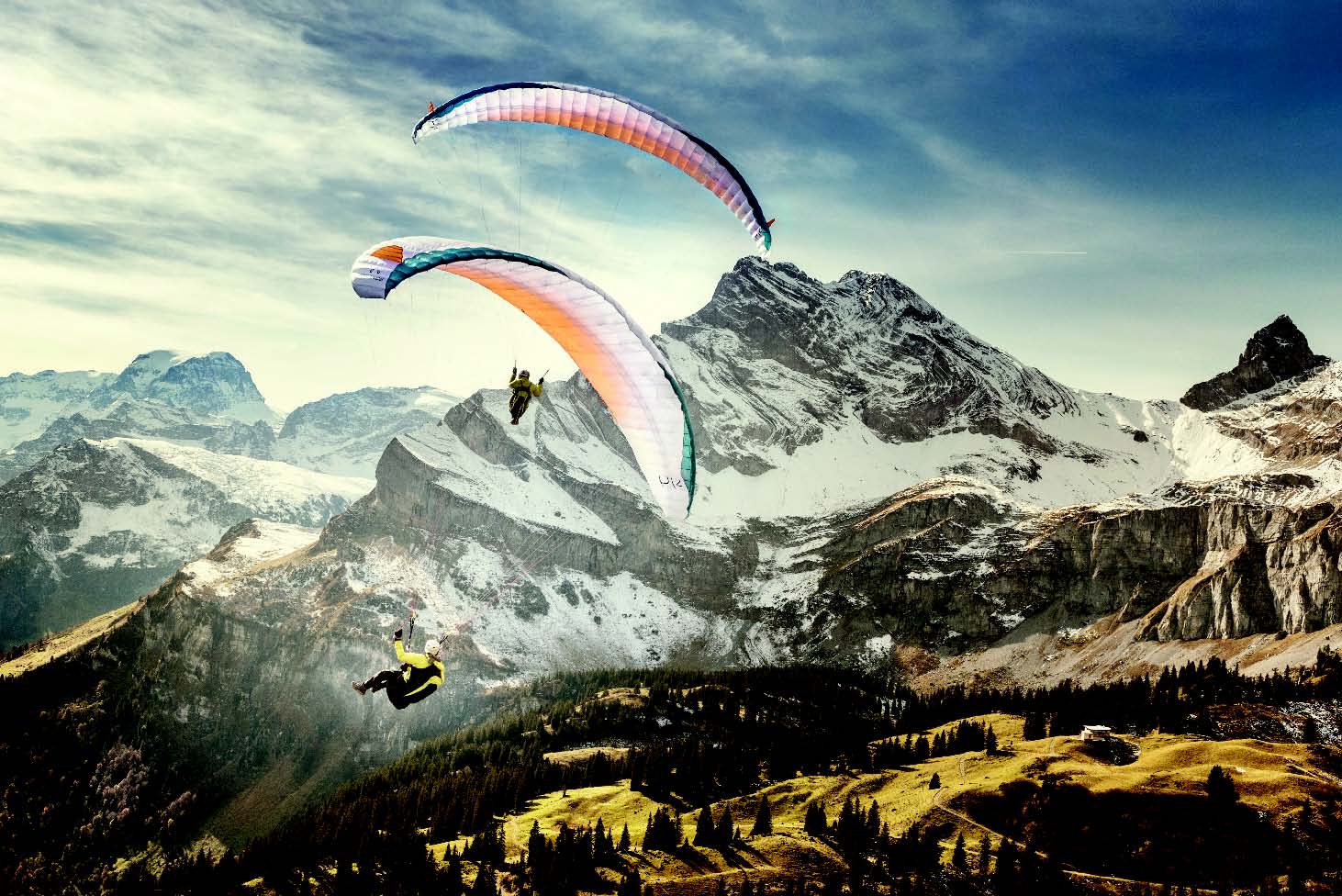
In the air
One small pull on the risers and the glider rises quickly, as one would expect from something so light, and like its predecessor stops obediently right above your head. Launch characteristics should be impeccable for mountain hike-and-fly gliders because you may need to launch in challenging places with strong or cross winds. The Pi 2 meets that demanding criterion easily.
Three or four steps and I was off and, with the benefit of my colleagues showing me where the dynamic lift was, maintaining easily. There was a definite inversion close to our take-off height and thermalling out above take-off wasn’t feasible. After a while I pushed out over a big gully which looked a likely thermal source. My gamble paid off and I locked into thermals flowing up the gully.
On my old Pi 23 I would not have been able to thermal in this relatively weak lift, but despite being on the borderline between ‘thermic’ and ‘hike-and-fly’ was able to spend some time playing close in to the gully. I found the Pi 2 to be very agile, banking up and turning sharply in the cores. Not what I had expected from an EN A/low B wing.
After a while I set off on a long glide towards the landing field. The air in the centre of the valley remained stable and without lift, and I soon arrived above the landing field with a lot of height. Glide measurements are notoriously difficult but I was able to make direct comparison with two commercial tandems who joined me. Whilst I was slightly faster that the tandems, constantly gaining on them when behind, I maintained at least as good a glide – and markedly better than my old Pi.
I couldn’t do big ears on the two-riser ‘Mk 1’ Pi, but there was no such limitation with the three-riser system of the Pi 2. Whilst I honestly cannot recall the last time I did big ears in anger, I tried the ears and they were easy, stable and uneventful, as you would expect for a wing of this classification.
With plenty of height remaining, I again banked the glider up and did some very tight 360s. These were easy to do with the Easiness 2. I tried pitching or dolphining the glider and, unsurprisingly, found it to be very pitch stable. On finals I noticed that there was no wind in the LZ. Whilst the landing approach was marginally quicker than my standard glider, with a good flare I was able to land on the spot.
My next outings were back in the UK in the Lakes in autumn, this time with the Pi 2 23, flying at the border between mini-wing and hike-and-fly. As mentioned above, my Mk 1 Pi was a 23m and there was a familiar feel to the glider when I did my first top-to-bottom off Clough Head. Unlike the 27, the 23 flies like a true mini-wing at my all-up weight. Flying a mini wing comes with a greater surge of adrenalin for me and is enormous fun, albeit short-lived in the smaller hills of the Lakes. The Pi 2 23 is a brilliant, agile and sporty little glider with enough speed to put a big grim on your face.
Summary
The Pi 2 and Easiness 2 are a great combination, especially if you are not looking to go uber-light. Then you might look, for example, at Advance’s Strapless harness or something similar. With the light pack the Pi 2 comes with you could be climbing or skiing and flying with 3kg of flying gear on your back.
The Pi 2 27 and Easiness 2 ‘security configuration’ are an excellent combination which should pass unnoticed by the most eagle-eyed flight desk attendant and go into the overhead lockers for air travel. All of your kit, including an ultralight reserve, could weigh less than 7kg and you’d still have a glider that is capable of good, safe XCs.
With the Pi 2 23 or the 27 – depending upon your all up weight – you’ll still get a fun ride and be surprised at the performance the wing gives you. You’ll need to be a little more careful on the ground with the light materials and unsheathed lines; you’ll also need to be vigilant when it’s windy on take-off. As with all ultralight gliders, they can be unruly if the wind gets between them and the ground.
The Pi 2 is suitable for virtually any pilot, provided they keep within their range of abilities. As to the Easiness 2, it was so comfy when flying I didn’t notice it. You can’t give better praise than that.
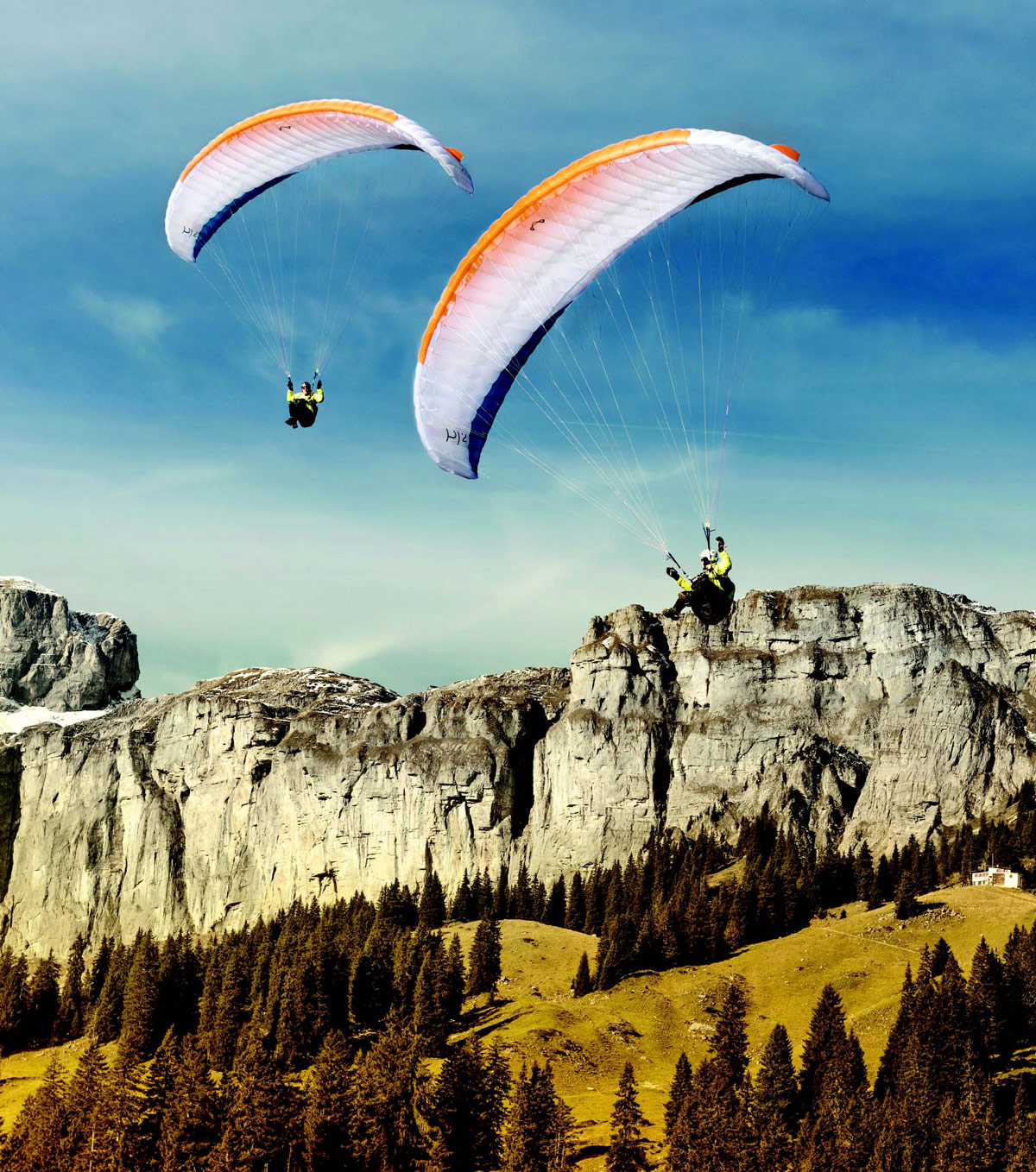
Specifications: Advance PI 2 | EASINESS 2
Brought to you by Flybubble
Like what we do? The best way to thank and support us is to buy gear from us and recommend us to others. Review our service on Trustpilot and our products on Flybubble Shop. You can also subscribe to Flybubble Patreon. Thank you!

